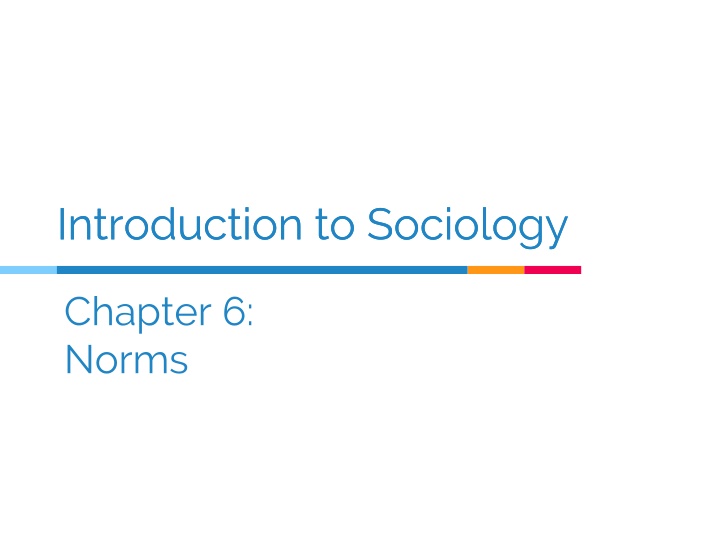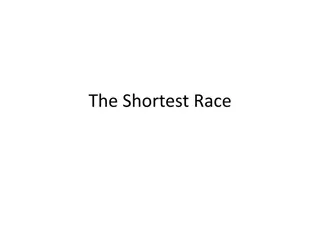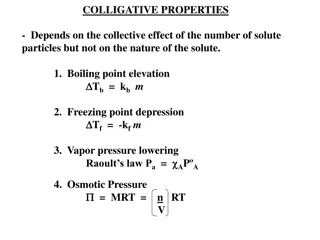
Social Norms in College Binge Drinking Context
Learn about the prevalence of binge drinking among university students and delve into the concept of social norms. Explore how social norms influence behavior and the different categories of norms that exist in society.
Download Presentation

Please find below an Image/Link to download the presentation.
The content on the website is provided AS IS for your information and personal use only. It may not be sold, licensed, or shared on other websites without obtaining consent from the author. If you encounter any issues during the download, it is possible that the publisher has removed the file from their server.
You are allowed to download the files provided on this website for personal or commercial use, subject to the condition that they are used lawfully. All files are the property of their respective owners.
The content on the website is provided AS IS for your information and personal use only. It may not be sold, licensed, or shared on other websites without obtaining consent from the author.
E N D
Presentation Transcript
Introduction to Sociology Introduction to Sociology Chapter 6: Norms
College binge drinking: a social problem? 2
College binge drinking: a social problem? When young people enter college, their alcohol intake levels increase. o 60% of students in 7 English universities meet criteria for hazardous drinking. (Heather et al., 2011) In the US each year: o More than 1,800 students die from alcohol- related causes. o An estimated 97,000 students are victims of alcohol-related sexual assault or rape. (Hingson et al., 2009) 3
How would you explain the fact that binge drinking is common among university students? Thinking like a Sociologist 4
What are social norms? Social norms are ubiquitous in social life o 'do not arrive late for an appointment' o 'you must not swear' o 'do not jump the line at the register' o do the dishes every day o don t interrupt someone when he is speaking o don t steal No consensus about the definition of social norms 6
What are social norms? Norms: rules of the game in society. Two categories of norms: o Injunctive norms: expresses what people should or should not do. o Moral norms: operates within the individual. o Social norms: operates in groups. o Legal norms: imposed by the state. o Descriptive norms: expresses which behaviors are typically performed. 7
What are social norms? Norms Descriptive Injunctive Conventions, Customs, Habits Informal: Social Norms Formal: Legal Norms Moral: Internal Norms 8
Social control theory Why do people follow social norms? 1. Expected social sanctions/social approval: o External sanctions expected to be imposed by third parties when not adhering to the norm. o Social approval expected to be received by third parties when adhering to the norm. 2. Expected monitoring: o The extent to which people are expected to be monitored by others in their group. 10
Social control theory Expected probability (P) of being monitored Low (P = 0.01) Expected sanctions/approval High (P = 0.5) Deviate High Low -100 -1 -50 -1 -2 -0.02 Conform High Low 50 2 0.5 0.02 25 1 Example: expected costs for high sanctions/low montoring as high as sanctions/high monitoring. 11
Social control theory P Social control proposition The higher people s expected social sanctions in a group in case of norm-deviance, and the higher their expected social approval in case of norm- compliance, the more likely they conform to the social norms of that group. 12
Example: Durkheims theory of suicide P The higher people s expected social sanctions in a group in case of norm-deviance, and the higher their expected social approval in case of norm-compliance, the more likely they conform to the social norms of that group. (Social control) C C P that group conform to the norm which prohibits suicide, and the lower the suicide rate in that group. (group integration-suicide) The more cohesive the group, the more strongly people in 13
Example: Durkheims theory of suicide P The higher people s expected social sanctions in a group in case of norm-deviance, and the higher their expected social approval in case of norm-compliance, the more likely they conform to the social norms of that group. (Social control) C The more cohesive the group, the higher people s expected social sanctions in case of norm-deviance, and the higher their expected social approval in case of norm-compliance C P that group conform to the norm which prohibits suicide, and the lower the suicide rate in that group. (group integration-suicide) The more cohesive the group, the more strongly people in 14
Example: Durkheims theory of suicide P The higher people s expected social sanctions in a group in case of norm-deviance, and the higher their expected social approval in case of norm-compliance, the more likely they conform to the social norms of that group. (Social control) C The more cohesive the group, the higher people s expected social sanctions in case of norm-deviance, and the higher their expected social approval in case of norm-compliance C Generally speaking, groups specify the social norm which says that suicide is prohibited. P The more cohesive the group, the more strongly people in that group conform to the norm which prohibits suicide, and the lower the suicide rate in that group. (group integration-suicide) 15
Example: conformity P The higher people s expected social sanctions in a group in case of norm-deviance, and the higher their expected social approval in case of norm-compliance, the more likely they conform to the social norms of that group. (Social control) C C P opinions and behaviour of actors in their social environment. (Conformity) There is a general human tendency to conform to the 16
Example: conformity P The higher people s expected social sanctions in a group in case of norm-deviance, and the higher their expected social approval in case of norm-compliance, the more likely they conform to the social norms of that group. (Social control) C Generally speaking, groups impose the social norm that their members should adjust their opinions and behavior to those of their own group. C P opinions and behaviour of actors in their social environment. (Conformity) There is a general human tendency to conform to the 17
Example: conformity P The higher people s expected social sanctions in a group in case of norm-deviance, and the higher their expected social approval in case of norm-compliance, the more likely they conform to the social norms of that group. (Social control) C Generally speaking, groups impose the social norm that their members should adjust their opinions and behavior to those of their own group. C Generally speaking, people expect that norm deviance results in social sanctions, while norm-compliance results in social approval. P There is a general human tendency to conform to the opinions and behaviour of actors in their social environment. (Conformity) 18
Internalized norms People sometimes (though not always) comply to the social norms of their group, even in the absence of any social control. Sociological puzzle Why do people stick to social norms when they could deviate from that norm without risk and thus do whatever they prefer to do? 20
Why would you think this happens? Thinking like a sociologist 21
Internalized norms Internalized norms (moral norms): When people are repeatedly exposed to a social norm, it becomes part of people s intrinsic set of prescribed set of things one should do. o Can also become part of one s personal preferences and values. Internal sanctions: when people deviate from an internalized norm, they sanction themselves, by feeling guilty or shame. 22
Internalized norms Habitus: behavioral dispositions that remain largely unconscious and which impact behaviour in an automatic way. o What you are inclined to do automatically, is therefore your habitus. (Bourdieu, 1984) 23
Legal norms 24
Legal norms Legal norms: norms (e.g. laws) imposed by a formal authority, and which, if violated, may be punishable by formal sanctions. What determines if people obey legal norms? 1. The higher people s expected legal sanctions in case of disobedience, the more likely they conform to legal norms (formal control). 2. The more legal norms are accompanied by people s social norms, the more likely they conform to social norms. 25
Why do norms emerge? Norms may emerge to solve two kinds of problems: 1. Cooperation problems: rational behaviour results in collective problems, because individuals are tempted to free-ride. 2. Coordination problems: everyone benefits from doing the same thing as the others, but what others will do is uncertain. 27
Cooperation problem Another student Cleaning 8,8 10,4 Always relax 4,10 5,5 Cleaning Always relax You Always relax is the dominant strategy: a strategy that is favorable to choose irrespective of what the other student will do. As the other student will act in the same way, the collective outcome is not the most desirable collective outcome. 28
Cooperation problem Cooperation problems in many domains of life: o Environment: what difference would it make if you decide not to fly, when other people do? o Littering: what difference would it make if I throw my trash in the bin and no one else does? Injunctive norms emerge as solutions to problems of human cooperation (to serve the public good). o If people obey the social and legal norms, they are better off as a collective in the long run. 29
Example: fishing cooperation problem without sanctions Fisher B Limited 9,9 10,3 Unlimited 3,10 4,4 Limited Unlimited Fisher A Without formal sanctions, this situation will result in unlimited fishing by everyone Consequently, legal norms like fishing quota may emerge 30
Example: fishing cooperation problem with sanctions Fisher B Limited 9,9 8,3 Unlimited 3,8 2,2 Limited Unlimited Fisher A With formal sanctions, it is more attractive for fishers to stick to the fish quota irrespective of what other fishers are doing. 31
Injunctive norms and cooperation If you want to understand the emergence of particular injunctive norms, it is often fruitful to see them as solutions to cooperation problems. Principle 32
Coordination problem Other person Handshaking 10,10 5,5 Bowing 5,5 10,10 Handshaking Bowing You There is no dominant strategy: both persons want to do the same, but both persons so not know what the other person will do. Situations like these require descriptive norms: specify what people are expected to, but violating such norms do not lead to sanctions 33
Coordination problem Many descriptive norms have emerged in response to coordination problems: o 'if you meet someone, you shake hands' o 'eat with a knife and fork' o always speak English o measure distance in miles Can emerge in two ways: 1. Imposed top-down, for example by a state (decrees). 2. Created bottom-up, through repeated interactions of individuals. 34
Descriptive norms and coordination If you want to understand the emergence of particular descriptive norms, it is often fruitful to see them as solutions to coordination problems. 35
Cultural maladaptation and norm change 36
Cultural maladaptation and norm change Unpopular norms: norms that do not serve the interest of the collective. o Belongs to the broader category of cultural maladaptation: does not fit the social environment. Two explanations for cultural maladaptation: Cultural inertia: time-lag between changing social conditions and adapting new norms. Pluralistic ignorance: when people believe that the majority supports a certain norm, whereas in reality this is not the case. 37
Example: cultural inertia Person B Right 10,10 0,0 Left 0,0 7,7 Right Left Person A Originally, Swedish traffic drove on the left. o This descriptive norm was in conflict with that of incoming traffic from neighbouring countries. In 1967, the Swedish government enforced that traffic in Sweden had to drive on the right. 38
Pluralistic ignorance Three characteristics of pluralistic ignorance: o The majority of people privately reject a certain norm. o They incorrectly believe that others privately support the norm. o Hence, they support the norm in public. Can lead to the bystander effect: people are less likely to help other people in a critical situation when passive bystanders are present. 39 (Darley & Latane, 1968)
Example: pluralistic ignorance Four students (A, B, C, D) publicly support binge drinking, but privately reject it. When A reveals his true preferences, this might still result in sanctions, because others can then signal they sincerely believe it is a good norm. Spiral of silence: people dare not to express their private preferences, as they (wrongly) believe thet deviate from the majority opinion. (Noelle-Neumann, 1993) 40
The dynamics of group distinction Descriptive norms can become subject to dynamics of group distinction. Trickle down theory: norms diffuse from high to low-status groups. 1. High-status groups invent norms to differentiate their group from low-status groups. 2. Low-status groups imitate these norms to associate themselves with high-status groups. 3. These norms become less attractive to high- status groups, resulting in new inventions. (Elias, 2000 [1939]) 42
Example: fashion Higher status Wear hat 8,4 4,8 No hat 4,8 8,4 Wear hat No hat Lower status Wearing a hat as a signal of group identity for higher-status groups. o This is only valuable if this is not imitated by the lower-status groups. (Simmel, 1957) 43
Online appendix: using game theory to understand norms 44
Game theory Game theory: complex social processes can be understood by presenting them as a simple game between interdependent actors. Prisoner s dilemma: Two persons are imprisoned and accused of a serious crime. To make them confess, they are separated and offered two options: they can betray the other, or remain silent 45
Prisoners dilemma step by step Prisoner B Prisoner A 1. Who are the players? 46
Prisoners dilemma step by step Prisoner B Remain silent Confess Remain silent Confess Prisoner A 1. Who are the players? 2. What are their choice options? 47
Prisoners dilemma step by step Prisoner B Remain silent 1,1 0,20 Confess 20,0 5,5 Remain silent Confess Prisoner A 1. Who are the players? 2. What are their choice options? 3. What are their payoffs? 48
Prisoners dilemma step by step Prisoner B Remain silent 1,1 0,20 Confess 20,0 5,5 Remain silent Confess Prisoner A 1. Who are the players? 2. What are their choice options? 3. What are their payoffs? 4. What are their strategies? 49
Prisoners dilemma step by step Prisoner B Remain silent 1,1 0,20 Confess 20,0 5,5 Remain silent Confess Prisoner A 1. Who are the players? 2. What are their choice options? 3. What are their payoffs? 4. What are their strategies? 5. What is the outcome of the game? 50






















